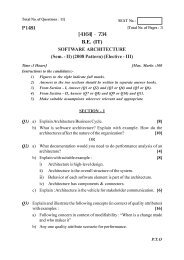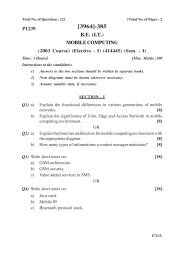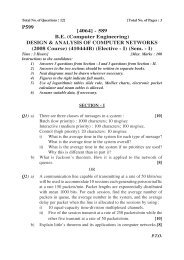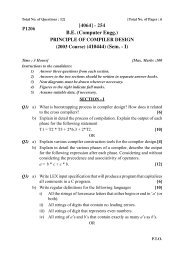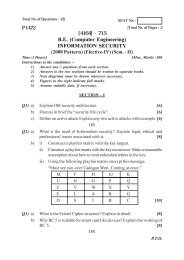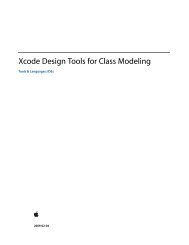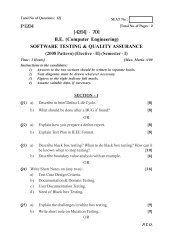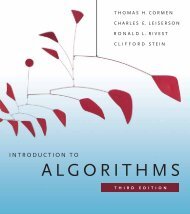Cloud Computing and SOA Convergence in Your Enterprise: A Step ...
Cloud Computing and SOA Convergence in Your Enterprise: A Step ...
Cloud Computing and SOA Convergence in Your Enterprise: A Step ...
Create successful ePaper yourself
Turn your PDF publications into a flip-book with our unique Google optimized e-Paper software.
84 Chapter 5 Work<strong>in</strong>g from <strong>Your</strong> Data to the <strong>Cloud</strong>s<br />
be placed on a cloud comput<strong>in</strong>g platform or will <strong>in</strong>teract with resources<br />
hosted <strong>in</strong> the clouds. Services provide a more granular way to deal with applications,<br />
because you can mix <strong>and</strong> match services that exist with<strong>in</strong> the enterprise<br />
<strong>and</strong> on cloud comput<strong>in</strong>g resources, all bound together us<strong>in</strong>g processes<br />
(discussed next).<br />
You need to underst<strong>and</strong> all bus<strong>in</strong>ess processes, the topic of Chapter 7,<br />
“Work<strong>in</strong>g from <strong>Your</strong> Processes to the <strong>Cloud</strong>s,” that exist with<strong>in</strong> your doma<strong>in</strong>,<br />
either automated or not. This underst<strong>and</strong><strong>in</strong>g is important because now that<br />
we know which services <strong>and</strong> <strong>in</strong>formation sources are available, we must def<strong>in</strong>e<br />
higher-level mechanisms for <strong>in</strong>teraction, <strong>in</strong>clud<strong>in</strong>g all high-level, mid-level,<br />
<strong>and</strong> low-level processes. In many <strong>in</strong>stances, these processes have yet to become<br />
automated or are only partially automated.<br />
Data First<br />
Let’s start with the data <strong>and</strong> work up from there. There are several reasons to<br />
take a close look at the underly<strong>in</strong>g <strong>in</strong>formation issues of our architecture before<br />
mov<strong>in</strong>g to cloud comput<strong>in</strong>g. First, you must have a good architectural<br />
foundation to move to <strong>SOA</strong> us<strong>in</strong>g cloud comput<strong>in</strong>g. You need to underst<strong>and</strong><br />
the underly<strong>in</strong>g <strong>in</strong>formation no matter whether it is a new or an exist<strong>in</strong>g system.<br />
Aga<strong>in</strong>, some <strong>in</strong>formation is right for mov<strong>in</strong>g to an <strong>SOA</strong> us<strong>in</strong>g cloud<br />
comput<strong>in</strong>g platform, whereas <strong>in</strong> other <strong>in</strong>stances it is contra<strong>in</strong>dicated.<br />
Second, mov<strong>in</strong>g from the data to the services to the processes <strong>and</strong> applications<br />
is a great way to move from the most primitive form of IT—simple<br />
<strong>in</strong>formation—to the most complex, from processes that have <strong>in</strong>formation<br />
<strong>and</strong> behavior to those with b<strong>in</strong>d<strong>in</strong>g logic <strong>and</strong> sequence. In essence, we want<br />
to start small <strong>and</strong> simple, then move to large <strong>and</strong> complex.<br />
You May Work <strong>in</strong> Any Direction<br />
We advocate work<strong>in</strong>g from the data to the services <strong>and</strong> then to the processes.<br />
However, this rule is flexible. If it is a better fit, you could work from the processes<br />
to the services <strong>and</strong> then to the data.



